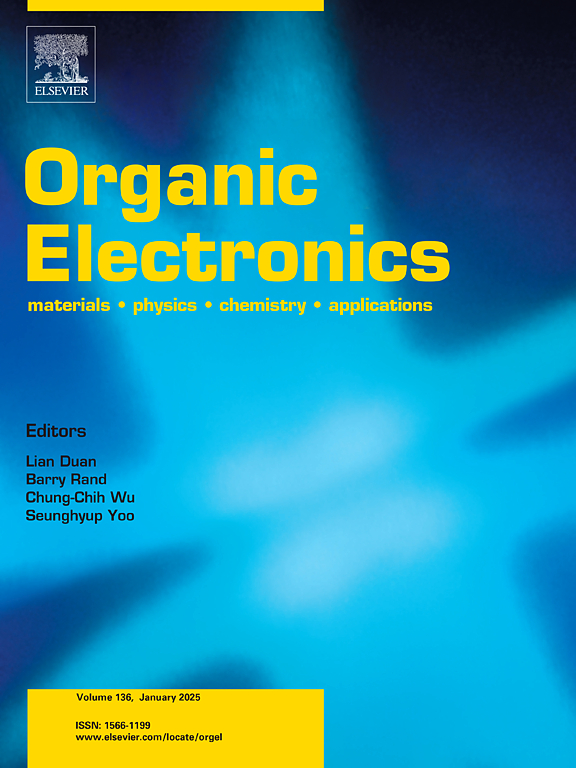Buckled stretchable organic light-emitting diode array with planar light-emitting pixels by strain engineering
IF 2.7
4区 工程技术
Q3 MATERIALS SCIENCE, MULTIDISCIPLINARY
引用次数: 0
Abstract
Stretchable organic light-emitting diodes (SOLEDs) based on buckled structures have been widely studied and offer broad application prospects in wearable electronics, deformable displays and electronic skin due to their high brightness and efficiency, large stretchability, and straightforward fabrication process. However, buckles are composed of a large number of wavy microstructures which bring large bending strain and uneven surface to the light-emitting regions. These negative factors increase the risk of device performance degradation, reduce the brightness uniformity, and distort the pixels. The negative effects are amplified by changes of the buckles’ morphology during stretching. In this paper, we solve these issues in buckled SOLEDs by strain engineering. Strain isolation islands are introduced into the flexible substrate to bear the compressive stress from the elastic tape and protect the light-emitting regions from forming buckles. As a result, a buckled SOLED array with planar light-emitting regions have been obtained. It shows a maximum one-dimensional (1D) stretchability of 50 % and a two-dimensional stretchability (2D) of 30 %. The pixels in the SOELD array exhibit efficient, stable and uniform electroluminescent (EL) performance. After 1000 times of cyclic stretching, the current efficiency, shape and area of each pixel in the array barely change, demonstrating the potential of the SOLEDs for stretchable display applications.

基于应变工程的平面发光像素屈曲可拉伸有机发光二极管阵列
基于屈曲结构的可拉伸有机发光二极管(SOLEDs)因其亮度高、效率高、可拉伸性大、制作工艺简单等优点,在可穿戴电子、可变形显示和电子皮肤等领域得到了广泛的研究和应用前景。然而,屈曲是由大量的波浪状微结构组成的,这给发光区带来了很大的弯曲应变和不均匀的表面。这些负面因素增加了设备性能下降的风险,降低了亮度均匀性,并扭曲了像素。拉伸过程中屈曲形态的变化放大了这种负面影响。在本文中,我们通过应变工程解决了屈曲SOLEDs中的这些问题。在柔性基板中引入应变隔离岛,以承受来自弹性带的压应力并保护发光区域不形成屈曲。结果得到了具有平面发光区的屈曲SOLED阵列。它显示出最大的一维(1D)拉伸率为50%,二维拉伸率(2D)为30%。在SOELD阵列中的像素表现出高效、稳定和均匀的电致发光(EL)性能。经过1000次循环拉伸后,阵列中每个像素的电流效率,形状和面积几乎没有变化,证明了SOLEDs在可拉伸显示应用中的潜力。
本文章由计算机程序翻译,如有差异,请以英文原文为准。
求助全文
约1分钟内获得全文
求助全文
来源期刊

Organic Electronics
工程技术-材料科学:综合
CiteScore
6.60
自引率
6.20%
发文量
238
审稿时长
44 days
期刊介绍:
Organic Electronics is a journal whose primary interdisciplinary focus is on materials and phenomena related to organic devices such as light emitting diodes, thin film transistors, photovoltaic cells, sensors, memories, etc.
Papers suitable for publication in this journal cover such topics as photoconductive and electronic properties of organic materials, thin film structures and characterization in the context of organic devices, charge and exciton transport, organic electronic and optoelectronic devices.
 求助内容:
求助内容: 应助结果提醒方式:
应助结果提醒方式:


